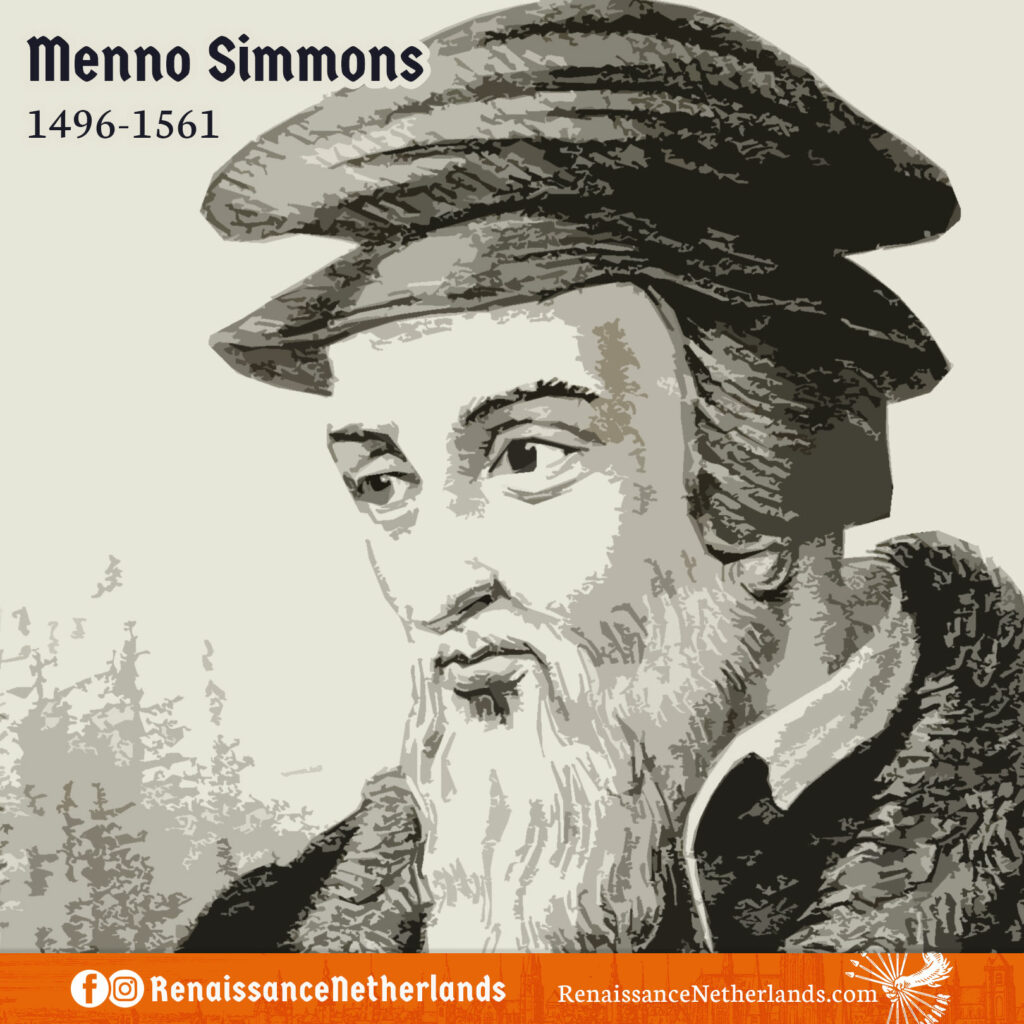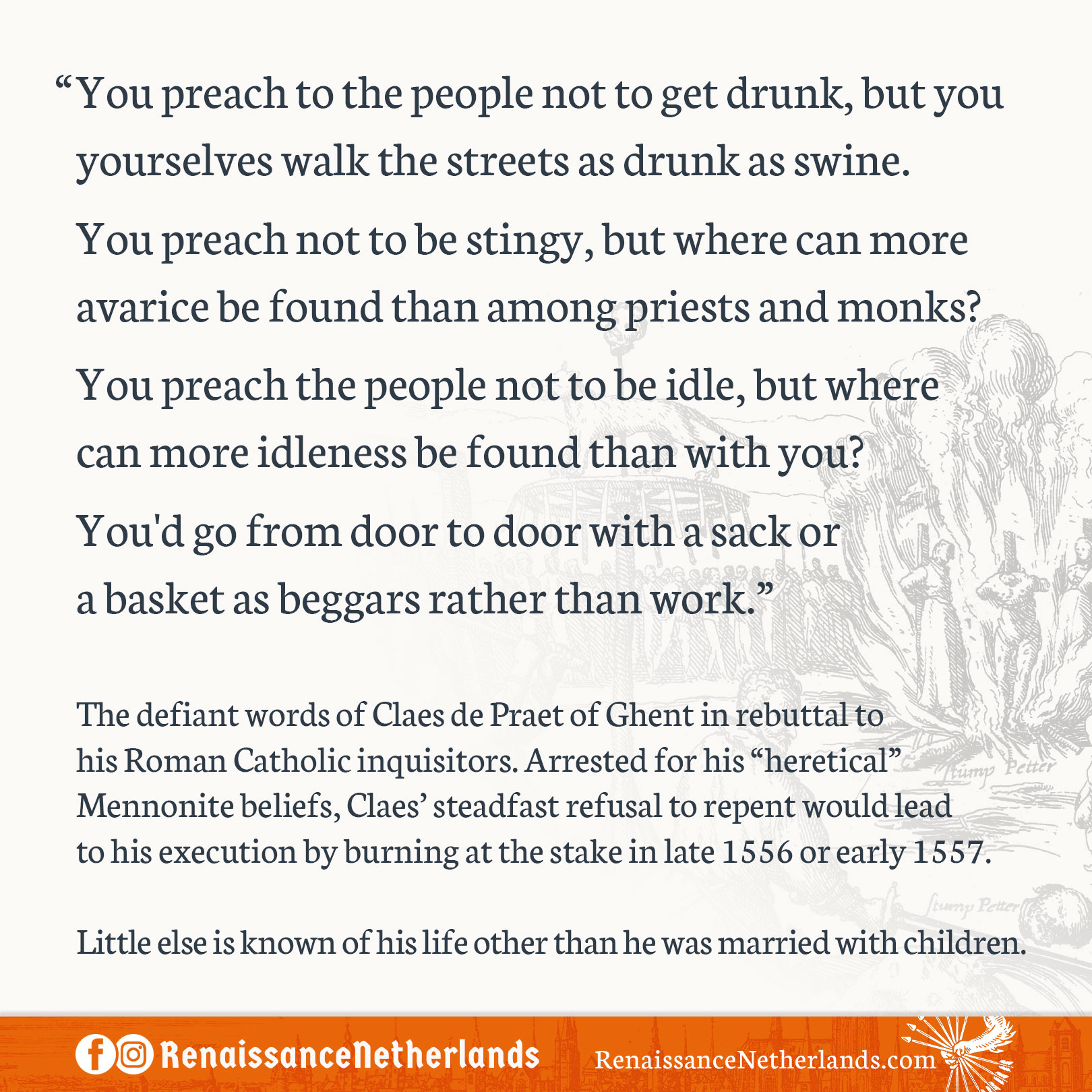In the early years of the sixteenth century, after a certain German monk famously nailed an academic debate to a cathedral door, the two early Protestant identities began forming – the eponymous Lutherans and the “Reformed” church in the mold of Huldrych Zwingli, Heinrich Bullinger, and Jean Calvin (whose detractors would later rebrand the movement with his own name: Calvinists).
But in these early years of the Reformation, another influential movement began to coalesce: one later scholars have come to call the Radical Reformation. If that term sounds unfamiliar and academic (and it likely will to most), then you may recognize the names of some of its component movements: the Anabaptists and the Mennonites.
Growing out of the same south German and Swiss lands that proved to be so fertile to the Lutherans and the Reformed, the early Anabaptists were apocalyptic: believing the end of the world and God’s judgement to be nigh, and that the true church was limited to small groups of real believers, baptized as adults, and without the support of worldly governments.
The movement took fervent root in the Northern Low Countries, where local leaders Jan Matthijszoon and Jan van Leiden lead an armed coup of the Westphalian city of Münster in the 1530s. This event shocked authorities throughout Europe.
Later generations of Netherlandish Anabaptists leaders – such as brothers Obbe and Dirk Philips, David Joris, and Menno Simons (whose influence would be so great that Dutch Anabaptists began to be called by his name: the Mennonites) – would look upon what culminated in Münster with shame and turn to advocating for quiet lives and the peaceful, sacrificial principle of nonresistance.

Still, local authorities remained acutely frightened of the prospect of a return of violent Anabaptism causing disruption and revolt, and so the Mennonites remained key targets of the Roman Catholic inquisition.
Beyond the terrifying memory of their end-of-the-world inspired violence, these later Mennonites carried no weapons (compared to the Reformed who would attend their very-public meetings in the countryside armed to the teeth) and were steadfast in their doctrine of adult baptism and other doctrinal distinctions against the Roman church.
This lead to their martyring by the dozens – even into the hundreds – into the seventeenth century. Exile and other hardships were left for those left alive.
Yet, the Anabaptists remained fervent – and defiant, even – in their beliefs. Here we see the defiant words of Claes de Praet of Ghent in rebuttal to his Roman Catholic inquisitors:
“You preach to the people not to get drunk, but you yourselves walk the streets as drunk as swine.
You preach not to be stingy, but where can more avarice be found than among priests and monks?
You preach the people not to be idle, but where can more idleness be found than with you?
You’d go from door to door with a sack or a basket as beggars rather than work.”
Arrested for his “heretical” Mennonite beliefs, Claes’ steadfast refusal to repent would lead to his execution by burning at the stake in late 1556 or early 1557.
Little else is known of his life other than he was married with children.
These words are attributed to a letter Claes himself wrote to the Anabaptist community, which detailed his arrest, imprisonment, and the questioning by Catholic authorities in their attempt to lead him to reveal his knowledge of other Anabaptists and to return to the Catholic fold.
Claes’ story – and his letter – was recorded in the 1660 publication, the Martelaersspiegel, or Martyr’s Mirror, a 1200 page history of Christian martyrs – primarily Dutch Anabaptists and Mennonites.
Selected Sources
A. L. E. Verheyden, Anabaptism in Flanders, 1530-1650
W. Benjamin Myers, The Stage and the Stake: 16th Century Anabaptist Martyrdom as Resistance to Violent Spectacle” in Liminalities: A Journal of Performance Studies, Vol. 5, No. 3, September 2009
S. Gregory, “Anabaptist Martyrdom: Imperatives, Experience, and Memorialization,” in A Companion to Anabaptism and Spiritualism, 1521-1700
Thieleman van Braght, The Bloody Theatre or Martyrs’ Mirror of the Defenseless Christians Who Baptized Only upon Confession of Faith and Who Suffered and Died for the Testimony of Jesus Their Saviour… to the Year A.D. 1660
